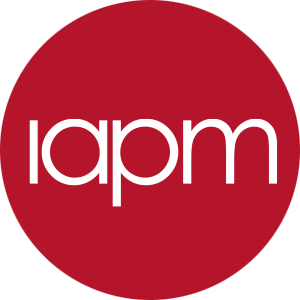IAPM Essentials #133- News from the project management world
What was eventful last week? What has happened in project management? Here you can find articles worth reading and links to videos or podcasts that we warmly recommend.
To put it briefly: Essentials from the world of project management.
Enjoy reading!
To put it briefly: Essentials from the world of project management.
Enjoy reading!

IAPM Essentials November 22, 2022
This week, these three articles were particularly inspiring:
How To Wardley Map
The Wardley Map is a map for business strategy. There are two axes: the y-axis and the x-axis. The y-axis represents the visibility in a chain to the user. The x-axis contains the four stages of evolution. They are labelled as Genesis, Custom Built, Product and Commodity. In the first stage of the Genesis the object is poorly understood and uncertain. During the second staged, the Custom Built, more people start to understand the object. The focus is on learning to understand its value. In the third stage, the Product, the object starts to become profitable, and it is getting competitive. Commodity, the fourth and last stage, means the object has stabilised. The object is making profit and it is efficient. The label on the x-axis can change but in general you should try to place the components in the correct stage. But it is a work in progress to get the right feel for it. If you want to learn more on how to start with the Wardley Map you should read the article.
Click here to read the original article.
Understanding the Fundamentals of Value-Stream Mapping
With value-stream mapping you can visualise a value stream. It contains of all the actions of value-creating and nonvalue-creating. That means bringing a service or material from concept to launch / from order to delivery by transforming the product on its way to the customer. Value-stream mapping usually starts with a team creating a current state map. It helps to identify areas of improvement. Afterwards the team creates a future state map. It shows how the process will work. The main intention is to understand the start-to-finish flow by visualizing the vision since it shows the flow of work across all the processes. In general, there are four zones in the value-stream map. In the first row you have the information flow, second row is the process box, third row the process data box and fourth row the timeline and summary statistic. But if you want to know what each of these zones mean you should have a look at the article.
Click here to read the original article.
Bear with it, please! - German language
It is difficult to deal with things or differences that seem disturbing or irritating. Or to listen to people who have a completely different opinion. But sometimes these situations provide the best ideas. Because this creates an openness for ideas and the possibility to find other solutions. In order to make this endurance possible it requires a clear attitude on the part of people with responsibility. This attitude is complemented by generally valid norms in organisations, in society and in politics. Especially in turbulent times, these are needed for productive problem-solving, as this is the best way to create meaningful coexistence by applying the principle of cooperation. And this also includes listening to lectures or opinions of others, no matter how contrary the own opinion may be.
Click here to read the original article.
The Wardley Map is a map for business strategy. There are two axes: the y-axis and the x-axis. The y-axis represents the visibility in a chain to the user. The x-axis contains the four stages of evolution. They are labelled as Genesis, Custom Built, Product and Commodity. In the first stage of the Genesis the object is poorly understood and uncertain. During the second staged, the Custom Built, more people start to understand the object. The focus is on learning to understand its value. In the third stage, the Product, the object starts to become profitable, and it is getting competitive. Commodity, the fourth and last stage, means the object has stabilised. The object is making profit and it is efficient. The label on the x-axis can change but in general you should try to place the components in the correct stage. But it is a work in progress to get the right feel for it. If you want to learn more on how to start with the Wardley Map you should read the article.
Click here to read the original article.
Understanding the Fundamentals of Value-Stream Mapping
With value-stream mapping you can visualise a value stream. It contains of all the actions of value-creating and nonvalue-creating. That means bringing a service or material from concept to launch / from order to delivery by transforming the product on its way to the customer. Value-stream mapping usually starts with a team creating a current state map. It helps to identify areas of improvement. Afterwards the team creates a future state map. It shows how the process will work. The main intention is to understand the start-to-finish flow by visualizing the vision since it shows the flow of work across all the processes. In general, there are four zones in the value-stream map. In the first row you have the information flow, second row is the process box, third row the process data box and fourth row the timeline and summary statistic. But if you want to know what each of these zones mean you should have a look at the article.
Click here to read the original article.
Bear with it, please! - German language
It is difficult to deal with things or differences that seem disturbing or irritating. Or to listen to people who have a completely different opinion. But sometimes these situations provide the best ideas. Because this creates an openness for ideas and the possibility to find other solutions. In order to make this endurance possible it requires a clear attitude on the part of people with responsibility. This attitude is complemented by generally valid norms in organisations, in society and in politics. Especially in turbulent times, these are needed for productive problem-solving, as this is the best way to create meaningful coexistence by applying the principle of cooperation. And this also includes listening to lectures or opinions of others, no matter how contrary the own opinion may be.
Click here to read the original article.
Further articles worth reading and podcasts worth listening, you should not miss:
Is Scrum Bad or is it Just Bad Scrum?
Click here to read the original article.
Können wir im Schlaf gezielt Erinnerungen speichern?
(en.: Can we specifically store memories during sleep?)
Click here to read the original article.
Some simple questions to generate more value with Scrum
Click here to read the original article.
Krise? KRISE! Woran du erkennst, dass dein Projekt den Bach runter geht
(en.: Crisis? CRISIS! How do you recognise that your project is going down the drain?)
Click here to read the original article.
Wie arbeitet ein radikal selbstorganisiertes Team?
(en.: How does a radically self-organised team work?)
Click here to read the original article.
The Definitive Guide to Project Sponsors
Click here to read the original article.
Ein Review? Nö, drei Reviews
(en.: One review? Nope, three reviews)
Click here to read the original article.
A fool with a tool…
Click here to read the original article.
Wie gestaltet man einen guten Check In für den nächsten Workshops?
(en.: How do you organise a good check-in for the next workshop?)
Click here to read the original article.
Drowning in Dependencies? Try a new Dependency Game!
Click here to read the original article.
Die Produktwerker: Agiles Schätzen mit #NoEstimates
(en.: The product manufacturers: Agile estimation with #NoEstimates)
Click here to read the original article.
Click here to read the original article.
Können wir im Schlaf gezielt Erinnerungen speichern?
(en.: Can we specifically store memories during sleep?)
Click here to read the original article.
Some simple questions to generate more value with Scrum
Click here to read the original article.
Krise? KRISE! Woran du erkennst, dass dein Projekt den Bach runter geht
(en.: Crisis? CRISIS! How do you recognise that your project is going down the drain?)
Click here to read the original article.
Wie arbeitet ein radikal selbstorganisiertes Team?
(en.: How does a radically self-organised team work?)
Click here to read the original article.
The Definitive Guide to Project Sponsors
Click here to read the original article.
Ein Review? Nö, drei Reviews
(en.: One review? Nope, three reviews)
Click here to read the original article.
A fool with a tool…
Click here to read the original article.
Wie gestaltet man einen guten Check In für den nächsten Workshops?
(en.: How do you organise a good check-in for the next workshop?)
Click here to read the original article.
Drowning in Dependencies? Try a new Dependency Game!
Click here to read the original article.
Die Produktwerker: Agiles Schätzen mit #NoEstimates
(en.: The product manufacturers: Agile estimation with #NoEstimates)
Click here to read the original article.

Author: IAPM internal
Keywords: IAPM Essentials, Links, News
